THE FACIAL HAIR: A SYMBOL OF AUTHORITY IN THE OTTOMAN İLMİYE CLASS
Abstract
This paper is about the Ottoman İlmiye Class which is one of the three classes that make up the bureaucratic structure in the Ottoman State. It focuses on a fictitious bond between the appearances and the authorities of the suhte, müderris, mufti, qadi, qadiasker, naqib al-ashraf and sheikh al-Islam. This tie is the beard and it is one of the most distinctive features of the Ottoman İlmiye Class. Therefore, in the study, it is discussed whether there is a link between the facial hair and the authority of the class. Archival documents and primary sources were used for the study. In addition, secondary sources that are not related to the subject but include related topics were also used. It is attempted to establish a link with the research that has not been discussed before. In this way, a new perspective on higher education is presented by establishing a beard relationship with the ilmiye which completes their appearance.
Keywords: Ottoman State, İlmiye Class, Medrese, Higher Education, Facial Hair.
Öz
Bu araştırma Osmanlı Devleti’ndeki bürokratik yapıyı oluşturan üç sınıftan biri olan İlmiye Sınıfı ile ilgilidir. İlmiye Sınıfı’nı oluşturan suhte, müderris, müftü, kadı, kadıasker, nakibüleşraf ve şeyhülislamların görünümleriyle otoriteleri arasındaki bağa odaklanmaktadır. Söz konusu bu bağ sakal olup Osmanlı İlmiye Sınıfı’nın en ayırt edici özelliklerinden biridir. Dolayısıyla çalışmada sakal ile sınıfın otoritesi arasında bir bağ olup olmadığı ele alınmaktadır. Çalışma için arşiv belgeleri ile birincil kaynaklar kullanılmıştır. Ayrıca konuyla ilgilisi olmayan ancak içeriğinde ilgili konuların yer aldığı ikincil kaynaklardan da faydalanılmıştır. Araştırma ile daha önce üzerinde durulmayan bir bağ kurulmaya çalışılmış, böylelikle İlmiye Sınıfı ile görünümlerini tamamlayan sakal ilişkisi kurularak yükseköğretime dair yeni bir bakış açısı sunulmuştur.
Anahtar Kelimeler: Osmanlı Devleti, İlmiye Sınıfı, Medrese, Yükseköğrenim, Sakal.
Introduction
Society consists of various upper and lower classes. These classes and sub-classes are shaped by gender, religion, language, race, profession, understanding and other similar dominant elements. It happens with the special language that the groups improve their communication both within themselves and with other groups. There are also both concrete and abstract contents in the created language. These concrete and abstract contents, on the other hand, become visible and understandable with object, action and manner.
In addition to the abstract language of the above-mentioned classes called ‘terminology’, the dress and appearances accepted as uniforms should be understood as a language. While it is possible for the classes to make contact within themselves, with terminology, in society the so-called uniform and appearance should also be included. Because appearance and dress have very different and deep meanings in their background. Every element, form and genre is a style and expression that has emerged in essence and developed over time. In addition to being professional, religion, language and cultural motifs are embedded in its background. In this regard, appearance and dress refer to a multilingual and multi-normed past.
The facial hair should be considered as one of the most concrete examples of the mentioned appearance. The open and closed messages contained in the beard are received and understood by people as perception. This understanding creates non-verbal communication. Therefore, the facial hair as a biological element develops as a deep-rooted communication language in social relations. Because this importance stems from the symbolic limiting feature of the facial hair (Firth, 1973: 285).
The value-giving form of the facial hair makes it an important symbol in hierarchical relationships. As a result, it thus shows belonging to an epistemic community that has its own rules (Hallpike, 1969: 256-264). After all, the facial hair is one of both abstract and concrete forms of expression. It is one of the important fictions of humanity, loaded with intensive anthropological and religious meaning. It has a unique content. It is a qualified language in the layers of society with its existence, form and types. It includes expressions that will find meaning in both anthropological and sexuality by belonging to the body. On the other hand, it has a valuable position in the order of religious and cultural achievements in terms of being processed. The facial hair have a value attribution to bearer.
In the Ottoman social order, those who were civil servants and ruled the state are called the ‘askeri’. The askeris have various privileges and are exempt from tax liability. The askeris consist of roughly three groups. The first of these groups is the ‘seyfiye’ [the military bureaucrats], which refers to the warrior class. The clerks and bureaucrats who are responsible for the bureaucratic functioning of the state constitute the class of the ‘kalemiye’ [the civil bureaucrats]. The ‘ilmiye’ [the scholars] is the third and the last class of the askeris. In the Ottoman State, education, judiciary and religious knowledge production are under the responsibility of this class. In this respect, the ilmiye is the intellectual class of the Ottoman State. Intellectuality and the production of knowledge and legitimacy have been brought about by this class.
The Ottoman ‘İlmiye Class’ and the medreses that are a part of it have been discussed extensively in the literature. On the other hand, there are no studies that establish independent links between the appearances of the departments that make up this class and their professions. However, the formation of the class is closely related to the formation of its bureaucratic structure as well as its visual presence. In this study, it will be established a connection between the ilmiye and its concrete appearance. For this, anthropological, historical and religious evidence will be consulted. Thus, it will be emphasized that a different angle from literature to look at the Ottoman higher education is possible.
The Purpose of The Study and The Contribution to The Literature
The basic hypothesis of the study is that the facial hair is a distinctive characteristic of the Ottoman İlmiye Class, the symbol of freedom and social contract. The ilmiye is separated from the other most important ruling class of the Ottomans, the seyfiye with its facial hair. On the other hand, this distinction in the administration clearly shows the difference between servants and free ones in the legal sense.
Sub-field areas should be designed so that the Ottoman higher education history can develop independently. Undoubtedly, these subfields cannot be considered outside of general Ottoman history studies. However, it has to form its own terminology and methods. Therefore, it is necessary to determine the definition and classification goals of the subfield with intensive work. Facial hair can be one of the foremost subjects of this classification, both symbolically and visually.
It is thought that opening the sub-fields mentioned above will facilitate the multi-layered understanding of the Ottoman education paradigm. In general, it is obvious that a political and chronological understanding of the Ottoman experience through visible figures is not enough to penetrate the issue. Maybe, thanks to the sub-fields, it will be possible to understand the medrese system that built the Ottoman experience in general and its mental background in particular. With this study, an attempt is made to make an experiment towards this claim. Thus, it is thought that an element such as a facial hair will contribute to the understanding of both the Ottoman education system and its value judgments.
It can be stated that Ottoman higher education studies generally focused on the lessons taught in medreses and books written by the life stories of scientists who are famous for their books. In this respect, it cannot be said that there have been widespread studies on symbolic elements or folkloric issues in Ottoman higher education. For this reason, there are no direct scientific studies on the facial hair and its use in Ottoman higher education. Facial hair, mustache and information about them are usually mentioned in medrese studies or anecdotal in biographies.
Among a few researches, the most relevant and most remarkable is Avner Wishnitzer’s work titled ‘Beneath the Mustache: A Well-Trimmed History of Facial Hair in the Late Ottoman Era’ (Wishnitzer, 2018: 289-326). The research is not directly related to the use of beard in the ilmiye. Wishnitzer uses the metaphor of the beard and therefore the beard in the comparison of classical education and modern education, and points out that the beard is a symbol of this change.
Another work that draws the most attention on the subject is Hasan Yüksel’s article titled ‘Tarihi Kayıtlarla Doğuda Toplumsal ve Dinsel Bir Ritüel Olarak Tıraş’ (Yüksel, 2018: 86-99). In this study, a general evaluation is made about hair and beard shaving. There is no information or evaluation of the scientific organization. However, the reasons for hair and beard cutting are counted and ties are established with the Central Asian tradition. In addition, explanations are made on an important issue such as the ‘tıraş bahası’ [shaving money] applied to the Mevlevi Order.
Susan Aykut’s work is not directly related to the subject as well. Since it is a work focused on political and political content, the beard is considered in a short section. The section in question is content with the emphasis on the importance of facial hair in the Ottoman practice (Aykut, 1999).
Özgen Felek’s work ‘The Human Body as a Mirror in Ottoman Literature’ also emphasizes the issues related to the facial hair (Felek, 2019: 249-284). However, in this study, beard practices in the ilmiye were not included. He quotes Seyyid Lokman’s ‘Şemail’ and ‘Hilye-i Nebeviyye’, and establishes connections between the physical appearance and literature. In addition, the importance of the facial hair in the Ottoman society is pointed out through the relationship between literature and sexuality.
The Background of The Facial Hair
The facial hair is mentioned in one place in Quran, and in the Surah Taha 20/94 as ‘lihya’ [ﻪﻴﺤﻟ], however it is stated that it does not contain any provisions (Yalçın, 2009: 1). However, the sources that reveal the importance of beard in Islam are taken from the Prophet Muhammad’s ‘sunnah’ [the words and behaviors of the Prophet]. Although there are different approaches to the interpretation of hadiths on the beard, the general acceptance is that growing a beard is one of the signs of the Muslims and therefore it is not correct to abandon it. Because the facial hair is a necessity according to the sunnah, which is the Prophet Muhammad’s actions and words. Therefore, although there are different opinions among the sects, the general view is that men must grow a beard. Within this framework, according to some views, it is haram [unlawful] to cut a beard, while according to another part, it is tahrimen mekruh [close to unlawful] (Baysa, 2017: 273-289).
It is understood that it has been developed an approach regarding the beard according to the provisions derived from the above hadiths. Thus, the provisions of the beard and mustache are derived from the sunnah of the Prophet, as well as the indirect interpretation of the orders of Quran. With the sunnah, a few issues are usually pointed out according to the beard. The first of these is that the Muslims do not resemble polytheists and members of other religions. Undoubtedly, this principle is aimed at revealing the differences of the Muslims in terms of appearance, as well as forming a unity in ideas. Such a principle is related to being an ‘ummah’. The second point that the hadiths about the beard focus on is the praise of natural behavior. The facial hair is an inherent element for men and it is important to show this. Since one of the manifestations of Allah’s power to create is with a beard, wisdom must be accepted. From the point of view of manifestation, a beard is a beauty and a blessing. Therefore, it is necessary to praise blessings. Based on such reasons, later ulema concluded that it is necessary to grow a beard (Yalçın, 2009: 1-2).
The facial hair must have been taken its share from the fact that European culture began to influence the Ottomans. In this regard, some ulema [scholars] have established a link between the facial hair and the competition of the Ottomans against the Europeans. A letter sent by the Mecca scholars to Abdulhamid II on September 16, 1879 can be cited as an example of this claim. According to the ulema, moving away from the essence of Islam and being like the Westerners is closely related to the collapse of the Ottomans. Many examples of resemblance can be cited. However, what is relevant is that the facial hair are shaved and the mustache grows. This situation is one of the reasons for resembling the Westerners, as it resulted in the withdrawal of the state (BOA. YPRK.MK. 1/16; BOA. Y.EE. 78/81; Kara, 2019: 347).
It is already known that during the reign of Abdulhamid II, the beard became an important element in the civil service. It is reported in many sources that the sultan appointed the bearded people, who were administrators in the state administration, to high ranks (Gemici, 2008: 69). For example, it is learned from the sources that Zeynelabidin Reşid Bey, the friend of İbnülemin Mahmut Kemal İnal, advised İbnülemin to grow a beard so that he could be appointed to high positions (Gemici, 2009: 102; Gemici, 2015: 176).
About The Facial Hair: Its Forms, Names and Types
The beard is an important symbol in the Ottoman İlmiye Class. This symbol in question is one of the important distinguishing features and definitions used in the definition of medrese members. This distinctive feature is visible in the verse of the mufti [jurisconsult] of Antakya, Sadık Muhammed Efendi:
We are not just müderrises, but we are also scholars
We are leaders, with white beards, in knowledge and resourcefulness (Mehmed Tahir, 1972: 386)[1]
There are many examples of this determination in the medrese attendance register [medrese yoklama defteri] of the 19th century.[2] A student logbook with similar information in the Archives of İstanbul Sharia Court Registers can be given as an example. Information about the physical structure of the student is given in the book of a student personal logbook [künye defteri] numbered 2286 in the archive (The Archives of İstanbul Sharia Court Registers: 2286 Talebe Künye Defteri). Basically, three points draw attention while giving information about the beard in attendance registers. These are the color, length and density of the facial hair. The definitions in the records acted on these three elements as a distinguishing feature. Moreover, this kind of information is no new for the Ottomans. Because the Ottomans have used the descriptions of the physical characteristics of people for a long time. An ‘Acemioğlan Defteri’ [Novice Boy Book] dated 1563-1564 is one of the records containing such data. The following description made for a novice boy can be given as an example for the information in these notebooks, where detailed descriptions are made: “He is of medium height, wheat-skinned, frowning brown eyebrows, brown eyes, has two scars on his left eyebrow. About fifteen years old” (TS, MA.d. 9541).
It is understood that in the Ottoman facial hair culture, beards and mustaches were named according to their color and density, especially their shape. For example, it can be said that in the Ottoman order, barbers adhered to various forms of shaving. As stated in a source, the relevant ones are as follows; It is reported that the name ‘çember sakal’ [circle beard] is used for imams and teachers, and ‘müzellef’ [stubbly beard] for shaving the beard of medrese students (Perk, 2017: 13). The shape of the circular beard is round. The fact that it is round is related to the fact that it surrounds the face. In the sources, it is described as “… a beard style with a maximum of three fingers under the chin, which turns the face like a circle towards the ends of the zuluf” (Koçu, 1965: 3821). Apart from this form of beard, it is also necessary to count the wooden and coarse beard [in the sense of long and imposing beard] (Pakalın, 1983a: 347; Koçu, 1958: 115).
The two works of Albrecht Dürer on Ottoman Turks are different from each other when evaluated in terms of beard. The facial hairs of the male figure in the ‘An Oriental Family’ are long and possibly neglected. The belief that it is unkempt is due to the fact that the mustache part of the beard above the lip covers the lips. Although the mustache covering the mouth brings to mind heterodox groups, it can be remembered that these groups tend to cut the facial hair such as beards and mustaches. In Dürer’s second painting, there is a contrasting beard form with the second one. All of the figures are depicted as shaved. Two figures have thin, long and curved mustaches. Albrecht Dürer’s drawings can also be evaluated in terms of beard and mustache lengths. The facial hair in one of his pictures is seen to be the size used today (Dürer: 1843,0513.227). The facial hairs are located in their natural borders and merge with the hair. There is no beard in the painting depicting three Ottoman Turks. However, it is seen that the mustaches are short, thin and long (Dürer: 1895,0915.974).
Especially recently, for example, in 1848, it is seen that information about the faces of the students is given in the medrese register (BOA. C.MF. 4/168). The facial hair and mustaches were among the features used to describe people in the censuses and records made in the Ottoman State (Aydoğan & Kılıç, 2017: 96). For example, in a study on Tokat medreses between 1830 and 1847, it is stated that those who have not reached the age of 20 are classified as ‘terbıyıklı’ [newly moustached], ‘şabb’ [young man without beard], ‘şabb-ter’ [young] and an ‘şabb-ı emred’ [adolescent young without beard], as learned from the population registers (Hanilçe, 2017: 253). Again, the beard and mustache naming of those who remained in Tokat medreses can be given as an example. These names, which are similar in other sources, are ‘ak sakallı’ [white bearded], ‘ince bıyıklı’ [thin mustached], ‘ince kara bıyıklı’ [thin black mustached], ‘kara sakallı’ [black bearded], ‘kır sakallı’ [gray bearded], ‘köse kara sakallı’ [very sparse black bearded], ‘kumral köse sakallı’ [very sparse brown bearded], ‘köse sakallı’ [very sparse bearded], ‘kumral bıyıklı’ [brown mustached], ‘kumral sakallı’ [brown bearded], ‘kumral müzellef sakallı’ [brown stubby bearded], ‘kumral taze sakallı’ [brown fresh bearded], ‘müzellef sakallı’ [stubby bearded], ‘sarı müzellef sakallı’ [yellow stubby bearded], ‘sarı bıyıklı’ [yellow mustached], ‘sarı bıyıklı’ [yellow bearded], ‘sarı terbıyıklı’ [yellow new mustached], ‘köse seyrek sakallı’ [very sparsely bearded], ‘köse sakallı’ [sparsely bearded], ‘kara sakallı’ [black bearded], ‘taze müzellef sakallı’ [fresh stubbly bearded], ‘taze sakallı’ [fresh bearded], ‘terbıyıklı’ [newly mustached] (Hanilçe, 2017: 253).
Because it is understood from the fatwas that the length of the beard should be as long as a ‘kabza’ [fist]. In this respect, Ebussuud Efendi’s fatwas can give an idea about the issue of beard length regarding the situation in the 16th century. When asked about the length of the beard, “Is it a sunnah to cut the lihye [beard] more than the fist?” Ebussuud Efendi gave the following answer to the question: “Ibn Umar (radiallahu anh) would say so, even the Messenger of Allah (sallallahu ta’ala alayhi and wa sallam) would report it like that. But there is no object in being too much, it will not be too long” (Düzdağ, 1972: 185).
The general practice in the profession of barber in the city was to scrape the head with metal such as sharpened iron or steel, and to shorten the beard with scissors called ‘mıkras’ (Perk, 2017: 28). The will of Sheikh Isa, one of the sufis, contains an interesting note about the beard length. This note is interesting because it gives a measure of beard length. It is reported that Sheikh Isa said in his will, “Those who love me should trim their mustaches until their eyebrows remain, and they should not trim their beards” (Göktaş, 2014: 360).
Ebussuud Efendi’s opinion on the permissibility of dyeing a beard is also positive. He was asked, “Is it permissible to dye the beard of men [erenler] with henna?” ‘permissible’ to the question; “What is the need for a Zayd who dyes his beard with henna and thuja, sinner [asim]?” He replied “He knows” to the question. However, another question took a different approach. According to this, “What is the need of Zayd, who paints his white beard with black paint, will he be a sinner?” This time, he replied to the question “It will be; there is a repugnance” (Düzdağ, 1972: 185).
It is known that Abdülkadir Hamidi Bey, who was one of the influential İimiye families in the Ottoman State, the ancestor of the Kınalızades and one of the teachers of Fatih Sultan Mehmed, applied kına [henna] on his beard. Abdülkadir Hamidi Bey was called ‘Kınalı Hoca’ because of this habit, and his family was named Kınalızade (Pektaş, 2021). The color of the beard is particularly striking in the depiction of naqib al-ashraf in the Ralamb Album; naqib al-ashraf’s facial hair looks red. However, since the turban on the head is green, it can be said that the beard is red in color because it is dyed with a coloring substance called henna (Rålambska Dräktboken: 10, 40).
It is understood that Molla Gürani, one of the great scholars of the Sultan Mehmed the Concueror period, was famous for dyeing his beard. It is reported that Molla Gürani, who read Quran every night until the morning, always dyed his graying beard black (Taşköprülüzade Ahmed Efendi, 2019: 154; Korlaelçi, 1992: 40; İbn Şerif, 2017: 170).[3]
It is also reported that Veliyyüddin Ahmed Paşa, one of the scholars of the Sultan Mehmed the Conqueror’s period and one of the müderrises of Bursa Muradiye Medrese, also dyed his beards. It was even noted that when the Sultan Mehmed the Conqueror asked why he preferred light to dark, about dyeing his beard by pointing to the darkness of the dye, the Paşa said that he blackened the face of the liar [that is, the black dye], and wanted to point out that although he was actually young, his white beard made him look old (Karabey, 2021; Oğuz, 2012: 454). Gelibolulu Mustafa Âlî, while talking about the poet with the pseudonym Çakeri, notes that the poet dyed his beard and mustache black because of his premature whitening (Mehmed Tevfik, 2017: 151; Latifi, 2018: 166). Mehmed Nami Efendi, who died in 1604, was a divan poet and received a good education as stated in the biographies and joined the ilmiye. It is mentioned in the sources that Mehmed Nami Efendi dyed his hair, beard and mustache due to untimely graying. It is noted that he reproached those around him, saying, “You wouldn’t have taken me between you with this untimely gray hair-beard and you wouldn’t be friends with me” (Kınalızâde Hasan Çelebi, 1989: 966; Yenikale: 2021). Sadrüddinzade Nimetullah Efendi is also included in his biography, where he appears as “…a strong young man with beautiful colors” (Uşşâkîzâde İbrahim Hasib Efendi, 2017: 778).
In the miniature depicting Hocazade and the Sultan Mehmed the Conquorer in the Şakaik’s Translation, both prominent figures are bearded. It is understood that the beards of both figures are well-groomed and their mustaches are held on the lips in accordance with the sunnah. Hocazade’s whitened and tapering beard draws attention (Muhtesibzade Mehmed: 90b).
The Surname-i Vehbi provides important examples of describing the beard style of high-ranking scholars. The facial hairs of the sheikh al-Islam, Rumelia and Anatolia qadiaskers, naqib al-ashraf and high-grade qadis, which are depicted both in the parade painting and on the table, are of remarkable color and characteristics. It is seen that the beards of those in the high ranks of the ilmiye are thick and long, and some ulema have longer beards than others. It can be said that the length of the beards is the size of a handle. Likewise, the fact that the cheeks and under the lips are bearded can be evidence of the claim that the beards are not straightened with a razor. Because the fact that both the cheek and the chin and under the lips are covered with a beard supports this idea. The mustaches are combined with the beard, and the sideburns are clearly visible. It can be stated that some beards, especially the light colored ones, are sparse. It is witnessed that the mustaches are shortened so that the upper lip can be seen. When compared with the pos mustaches of the other ‘ümera’ [administrators] at the table, it can be stated that the mustaches, especially in the table description, show an appearance in accordance with the sunnah of the Prophet. On the pages where the ulema are depicted, it is seen that the beard colors include the general prevalence. It can be said that some of the bushy and long beards are black, and some of them are still whitening. There is also the presence of gray beards. The sparseness of some beards, especially the auburn beards, is indicated. Blonde and red beards can also be mentioned as well as auburn beards (Seyyi Vehbi: 3a, 66b, 73b).
In a miniature named as mullah in the collection of the British Museum, the beard is depicted as intermittent gray and white. The tips of the mustaches are thin and depicted as curved. The sequential white and black beard may be natural, or it may be dyed intermittently in the form of a beard style (The Habits of the Grand Signor’s Court: 25b).
The Ottoman İlmiye: As The Bearded Men
When it comes to establishing a link between the facial hair and the Ottoman İlmiye Class, the most appropriate word to use may be ‘professionalism’. The professionalism that gives its name to a chapter in Biow’s work can actually find its counterpart in the Ottoman İlmiye Class (Biow, 2015: 19). Because the beard must have emerged as a symbol of professionalism in the ilmiye in all respects.
Before establishing a relationship between the Ottoman ilmiye and the beard, it is important to point out the link between the beard and the Turks. At least to the European mind, there is a match between the beard and the Turkish image. Because It is understood that the beard has turned into an image expressing the Turks in European art. Gentile Bellini’s Sultan Mehmed the Conqueror painting may be a result of this approach. This image became concrete over time, for example, Guiseppe Struppiolo of Venice was trialed in the inquisition court in 1632, just because he had beards like the Turks (Vanzan, 2004: 47).
In the Ottoman İlmiye Class, it is understood that the beard was an omen, a slogan due to both religious, customary and sociological requirements. It is understood that this original quality has always been preserved. However, it is necessary to claim that the beard has an influence and agenda that goes beyond the Ottoman İlmiye Class. The beard deserves to be evaluated as an element with different contents than just a tool of personal taste. Because “The beard was left with a ceremony, prayers and feasts were organized. Especially those who found a high degree of civil service in government offices or at the gate of the sheikh al-Islam felt obliged to grow a beard in order to preserve the honor and dignity of the office that they had granted. For those who held such a position, growing a beard was a religious duty, and it was an illegal social custom to renounce and neglect. People of advanced age and position take advantage of every opportunity and force young people to grow beards with encouraging words” (Pakalın, 1983b: 81). Because it is claimed that the facial hair is one of the areas where the desire to grow a beard is visible in a group, a profession or an epistemic community (Wishnitzer, 2018: 304). After all, it can be seen that the background of this request is to comply with the rules of the community in question. The epistemic community, on the other hand, reveals the necessity of making a mutual agreement by giving signs of ‘social control’ with elements such as hair, beard and mustache in the narrow sense (Synnott, 1987: 394-396).
It is often seen that the beard is an element of privilege. Although there were those who wanted to use this element, they were banned. According to an edict dated February 5, 1733, it is understood that some people avoided going on an expedition by using their facial hairs and tried to take advantage of the opportunities of being a student. In the judgment sent to the qadi of Ereğli, Karaman, it is stated that the janissaries and the Kapıkulus [sultan’s special forces] put a turban on their heads and grew beards on their heads, and it was requested that necessary action be taken (BOA. A.{DVNSMHM.d. 139/271). Moreover, some privileges such as beard growth, such as being exempt from military service during the Ottoman period, attracted the Ottoman medrese students.[4]
Issues such as the importance of the power factor against nature and the responsibilities for the continuation of the generation can find a place in the social imagination. The mere understanding of power must have built up eclectic channels of communication in social structures over time. For example, it seems possible to think that the channels in question were traced in the area called ilm-i kıyafet [the science of physiognomy]. According to the ilm-i kıyafet, which is about making meanings from the physical structure of the body, there are issues that the beard reveals in many issues, although it can be discussed. When it is met with the words the facial hair, lihye, hat [ﻂﺧ] or mehasin [ﻦﺳﺎﺤﻣ], it will be immediately understood that it is a matter of the face. It is the place to see the face beauty in classical literature and understanding. What is inside is reflected outside with the face. In this respect, the beard, which is one of the important elements of the face, reveals the hidden information according to the situation. According to the ilm-i kıyafet understanding in his period, a person with a small beard and a corner has foresight and understanding. The sparse beard, on the other hand, indicates good disposition and pleasant thoughtfulness. A long beard is seen as a sign of lack of intelligence, a short mind, and a thick beard is seen as a sign of sad and bad intelligence. A very sparse beard, known as a tatari [like-Tatar], is considered a sign of bad temper. A medium facial hair is seen as evidence of being determined and dignified (Tayşi, 1993: 118).
There are many examples of the members of the ilmiye having long beards. For example, the length of Fahreddin Acemi Efendi’s beard caused trouble for him. It is noted in his biography that his beard caught fire while he was blowing the fire (Taşköprülüzade Ahmed Efendi, 2019: 116). It is known that some of the scholars have long or big beards. Molla Yegan and Molla Hüsrev have ‘big beards’ (Taşköprülüzade Ahmed Efendi, 2019: 142, 202), Molla Gürani (Taşköprülüzade Ahmed Efendi, 2019: 116, 476), Seyyidi al-Hamidi Efendi (Taşköprülüzade Ahmed Efendi, 2019: 476) and Esiri Mehmed Efendi (Uşşâkîzâde İbrahim Hasib Efendi, 2017: 766) have also ‘long beards’.
Although a beard is a sign of the work they are dealing with for the members of the Ottoman İlmiye Class, it corresponds to a qualified language in the broad social structure of the Ottoman State. Since this language is unique to men, it is also one of the signs of a male-centered structure. As such, it had a function that opened sexuality for that period. One of the functions was undoubtedly formed as power ownership. In this respect, the beard is undoubtedly a symbol of power in the ‘official field’. For example, even though a beard is identified with the ilmiye, it is understood that it is a physical element that is generally accepted by other classes. There are many documents to support this opinion, in which it is recorded that payment was made for growing a beard.[5] It is also a sign of freedom and independence in that the sultan’s servants do not have the freedom to grow a beard. Therefore, the right to grow a beard was a ‘gentile’ privilege in the Ottoman society.
Besides being a ‘gentile’s sign, the beard finds its upper identity in the Ottoman sultans. Because the beard with the ‘cülus’ [enthronement] is a sign of rulership. Although it was changed later, the princes did not have the right to tesrih-i lihye [grow a beard] as well as to have children until they ascended the throne. The şehzade [crown prince], who ascended the throne, had the right to grow a beard, in other words, as an adet-i kadime [old custom] (Özcan, 1993: 111). As can be seen in the albums, the Ottoman sultans always had beards (Tayşi, 1993: 118).
As pointed out before, the beard has been the right of the sultan and his permission. The military bureaucrats [seyfiye] dressed according to the tradition of their class. While the gentlemen wear a börk [red hat], a leather-covered skullcap like arachnid, they are beardless (Tayşi, 1993: 118). Sipahi [cavalrymen] are also deprived of the right to grow a beard. However, they have grown a mustache called ‘the yataklı’. It is aimed to transform the faces into a frightening shape with ‘the yataklı’, which is a long and thick mustache (Pakalın, 1983c: 235).
The fact that the beard is a sign of sovereignty has added other values to it. Undoubtedly, it is not possible to say that this value developed only in the Ottoman period. As with many other institutions and practices, its roots can be traced to the steppes of Central Asia. It should be said that growing a beard corresponds to an area of freedom. There must be two reasons for this. The first of these reasons must be related to the face. Since it is an aspect of a hundred people, it establishes its connection with the outside. It is the body where the blessings are seen. If we want to show the roots of Sufism in this situation, the following sentence can be remarkable: “Hair, beard and mustache are likened to ‘the face’ and also the face to ‘personality’ because they cover the face with the influence of mysticism in classical literature, and in this way, ‘earlocks covering’ [küfr-i zülf] and ‘covering the facial features’ [hatt-ı kafir] similar metaphors were produced” (Pakalın, 1983b: 337).
The second reason is related to freedom and liberty. In this respect, interventions to the beard can be considered as one of the great punishments since it is an intervention in these two areas. In fact, it is known that the greatest punishment to be given to a valiant in the old Turks was to cut his horse’s mane along with his beard and mustache (Aydemir, 2012: 338). It is also seen that cutting a beard as a punishment was also a practice in the pre-Ottoman Turks. It is stated in the Baburname and Zafername that those who could not fulfill their duties were punished by cutting their beards (Şen, 2004: 35). It is observed that this approach continued in the Ottoman period, with more or less differentiation. For example, cutting the beards of those who participate in the campaign or do not obey the orders can be given as an example to this claim (BOA. A. {DVNSMHM.d. 65/961; Naîmâ Mustafa Efendi, 1969: 2087, 2095, 2119, 2211). Another example is the punishment of qadis [judge-court offcial] by cutting their beards if they do not pass the inspection. The qadi of Ma’arra, Mevlana Piri, is one of those whose beard was trimmed in the Divan [the state council], who passed such an inspection (Alan & Atçıl, 2018: 184). It is learned from the dates that the ulema sent to Edirne during the ‘Edirne Incident’ were persecuted. One of these tortures is related to the facial hair in the general sense of humiliation. Because it is learned that the beards of the scholars and sheiks who came to Edirne were burned and humiliated (Anonim Osmanlı Tarihi (1099-1116 / 1688/1704), 2000: 234). It is also seen that such penalties are included in the kanunname [book of law] (Kurt, 2010: 43). Since cutting and plucking a beard is an insult, it is learned from the archive documents that it was also done by the bandits. Because if the bandits wanted to torture people, one of the things they did is to cut the beard BOA. A.{DVNSMHM.d. 2/15; A.{DVNSMHM.d. 26/267; A.{DVNSMHM.d. 46/491; A.{DVNSMHM.d. 73/920; A.{DVNSMHM.d. 91/268; A.{DVNSMHM.d. 71/685).
Of course, the roots of this approach can be seen in the old days. As it is known, it is accepted as sunnah to shorten the mustache while growing the beard. On the other hand, cutting the beard was condemned and not welcomed with the light expression of the word. Similar reasons are encountered in an incident described about Hasan Basri [of Basra]. Hasan Basri, known for his opposition to the Umayyads, stated that the ulema should stay away from the assembly of the rulers, and that Allah took their word from them to tell the truth under all circumstances. On the other hand, when he saw the ulema who wanted to meet with Hajj bin Yusuf, whom he saw as cruel, he said, “You even cut off your mustache because of your greed. You have disgraced the ulema by doing this,” he was one of the first examples of how shameful it was to cut the beard and mustache (Kotan, 2018: 140).
It has been an important issue for those who are busy with matters related to religion to have beards. Often, tight ties have been established between the beard and the task. For example, Ebussuud Efendi was asked whether an imam could be dismissed if he cuts his beard. In the face of this situation, Ebussuud Efendi gave the fatwa that if the facial hair was shorter than the fist size, the person would dismissed (Düzdağ, 1972: 67).
It is probably a coincidence that when the beard is considered important, a date is written for the dissection in literary works. Since growing a beard is considered one of the important issues, it is also seen that the date has been written about it. For example, Nimetullah Efendi, who was a müderris in the sheikh al-Islam offices of Mirzazade Şeyh Mehmed and Damadzade Ebulhayr Efendi, is known to make history in his divan about growing a beard (Alkan, 2021).
The first and basic element of the Ottoman İlmiye Class is students. Students are generally called suhte or sohta. High-level students studying in Fatih Sahn-ı Seman and Süleymaniye Medreses are called danişment. Students started their medrese education from first level medrese [20’li medrese], which is the lowest step. After graduating from Sahn-ı Seman or Süleymaniye Medreses, they joined their professional lives as either a müderris, a qadi or a mufti.
It is known that some scholars in the first period did not accept children with unfinished beards to their councils because of the children who got ahead of them and entered the quarrel to benefit from the teachers (Çelebi, (t.y.): 310). However, students who pass from primary schools to medreses should not be bearded since they are in their first years. Because, in a study examining the life of Gelibolulu Mustafa Âlî, it is concluded that the age of starting the medrese should be between the ages of twelve and fifteen (Fleischer, 1986: 25). It can be accepted that the age range between 12 and 15 is the age to start the medrese (İzgi, 1997: 51). This period can be called şabb-ı emred [a young man without beard], in other words, the period of being beardless. The facial hair should have grown in this process according to climatic conditions and biological characteristics. In this regard, it is known that urban young men are not bearded (Turan, 2018: 282).
It is necessary to foresee that young people who grow stronger after the first period of medrese education grow beards. Because it is understood from the archive documents that the beard was accepted as a sign of medrese students. An important decree dated 1574 can be cited as an example to this situation. According to the Mühimme Defteri [Mühimme Register], it is stated that a rebel named Mehmed cut his beard and mustache in order not to be recognized. It is reported that he harmed the surroundings with the rebels he gathered around him while he was in the sanjak of Alanya, and the suhte who was in Bursa with his deputy father was requested to be caught (BOA. A.{DVNSMHM.d. 25/2602; A.{DVNSMHM.d. 26/715).
According to its waqfiya [deed], thirty of the rooms of the medrese in the Vizier Osman Paşa Külliye [social complex] in Aleppo were allocated to married or single students from Aleppo or other places for education. However, it is understood that there are some restrictions on the use of these rooms. So much so that one of these restrictions is that students do not cut their beards. It is understood that students who do not have a beard or cut their beards cannot benefit from this right (Bayrak, 2010: 51).
Suhtegan-ı Anadolu [the students of Anadolu medreses], which is depicted during the parade in the Surname-i Hümayun, contains interesting information about the color and shape of the beards of the students. Some of the students are bearded and some are beardless, probably due to age-related reasons. Bearded ones can also be said to have a mustache and a rounded beard. It can be stated that beard lengths are shorter than the size of a fist. There is often no beard under the lower lip. It is observed that the beards on the cheeks are just beginning to grow. People who do not have a beard but have a mustache and a little beard on their chin may also be attributed as very sparse beard. Students who are thought to be beardless have a wispy beard on their chin. Their beards go down a little from the top of the ears. However, beards are not included on the cheeks and other parts of the face. Except for two of the consultants who made the transition in the same ceremony, all of them are bearded. Danişment, who are older than the students in age, have bushy and black-brown beards. It can be stated that the two consultants were beardless due to their under-ear and a tuft of beard on their chin (Surname-i Hümayun: 332b-333a).
Another example of the importance of the beard in the eyes of the student is an event dated 1667. From the notes of a person named Abdülhalim, it is learned that Şeyh Mehmed İzzeti Efendi brought him to Egypt when he was finished as a qadi in Cairo and became an advisor to İzzeti Efendi. It is understood that Abdülhalim was in need of attendance, with İzzeti Efendi becoming an Anatolian qadiasker in 1667. Abdülhalim notes this situation in his notes as follows: “The time is that it was the beginning of Muharram in 1078 when I was appointed as a danişment to İzzeti Efendi, at that time I started growing a beard” (Alan, 2018: 62).
The miniature depicting the lesson in Gazanferağa Medrese can also be used to get information about beard colors. It can be said that the beards of some of the students in the row in front of the müderris are black, and a couple of them are yellowish or brownish. Light whites from miniature are chosen for a student’s beard. In this respect, the age or genetic factors of students can be considered from beard colors (Mehmed bin Abdülgani: 22a).
An example of another well-groomed beard is müderris Ahmed Karabaği’s beard that seen in a miniature. Those around Karabaği also have beards as well. The beard of the person on the right is partially long and is grew up to the cheeks. There is a sparseness due to the fact that the beards on the cheeks are either in their natural state or are cut. On the other hand, it can be claimed that Karabaği’s beard is well-groomed. From the point where the beard meets the hair, a very narrow beard section has formed on the cheeks towards the chin. It is seen that the mustache is short and joins the beard with a thin line. It is seen that the beard is left pointed at the chin part (Mehmed bin Abdülgani: 22a).
According to the medrese population register dated 1844 and numbered 185, information on the beards and mustaches of 1328 people out of 1456, in other words 91%, were included. The age ranges according to the various beards and mustaches in the record are as follows: Although age and beard-mustache bonds cannot be established, since similar expressions are given for different age groups, those between the ages of 12-16 are used as şabb-ı emred [a young man without beard], and those between the ages of 17-20 with a terbıyıklı [newly moustached] (Koçu, 1961: 2756).[6] However, 77% of the people who were given beard and mustache information, 1132 people, consisted of newly mustached [terbıyıklı], [şabb-i emred], black, brown hair and ‘müzellef sakallı’ [stubbly bearded] people (Aydoğan & Kılıç, 2017: 96).
In order to avoid any hesitation in the Harput Kefalet Defteri [Harput Recognisance Book] dated 1845, their age is also included in addition to their facial features. For example, it is noted that 28-year-old student Ali Efendi has a black beard, and 50-year-old Hacı İbrahim Efendi has a brown beard (Çevik, 2014: 26-27).
It is seen that information about the physical characteristics of the students is also included in the petitions of the students who will go to the countryside from Istanbul for cerr, including the permission and transportation aid. There are several examples of this application. The first example is in a document dated 1845 and belongs to 25-year-old Osman Efendi, one of the students of the Bosnevi Darülhadis Medrese in Horhor, Fatih, who was going to go to Rize. At the top of Osman Efendi’s petition, his physical features are given and it is written that he is of ‘medium height and has a black beard’ (BOA. A.}DVN. 8/97). Examples of the facial hair information noted in the petitions dated 1848 of Mehmed Nuri bin İsmail Efendi, a 33-year-old student of Kepenekçi Sinan Medrese in Fatih and a 17-year-old ‘şabb-ı emred’ [a young man without beard] Süleyman bin Mustafa, who is a resident of the same medrese, can be given as a sample (BOA. A.}DVN. 35/73).
It can be said that the tradition of growing a beard continues in the late periods. For example, the obligation to grow a beard in Urfa can be given as an example in terms of showing the relationship between medrese students and beard. According to Hasan Açanal, one of the mufti of Urfa, “… medrese students in Urfa were compelled to grow a beard and wrap a abani[7] turban after the age of 20” (Akgündüz, 2018: 17).
The second and other important element of the ilmiye organization is the müderrises. It was fulfilled by those who passed the teaching profession after the medrese education. When they were engaged in science education, they were expected to be in a suitable appearance for their profession. The possibility of being qadi, mufti and consequently sheikh al-Islam must have necessitated the müderrises to show their scientific qualifications. If it is known that Emir Sultan, one of the great mystics, had a long beard as well as his tall stature, the importance of having a beard can be easily understood (Kunter, 1958: 39-63).
The importance of having a beard also manifests itself as an idiom in being appointed as a müderris. It is witnessed that the term ‘sakal göstermek’ [showing a beard] is used synonymously with being appointed to a medrese in this regard. For example, this term is used for Abdülkerimzade Mahmud Efendi, and it is recorded that he was appointed as a müderris to İbrahim Paşa Medrese in 1604, replacing Köse Sinan (Nev’îzâde Atâyî, 2017b: 1410).
It is clear with the law that the beard is important in müderrises. Probably, the efforts of the intermediaries and the ‘zadegan’ [müderrises’ sons] class to rise rapidly and get a ‘müderrislik’ [professorship/müderrisship] must have caused some problems. For example, in the notes of Sadreddin Efendi, one of the members of Darü’l-hikmetü’l-İslamiyye [Islamic Academy], shared with Mehmet Zeki Pakalın, “It should also be known that even though they had a beard, the zadegan were not allowed to approach the medreshs, and the seals of the müderris-ship on them were given to the old müderrises [hoca efendiler] by the ‘ders vekaleti’ [the education department in the Ottoman Şeyhülislam] and their the fodla [a kind of soup kitchen bread] and other income from foundations was spent for them” (Pakalın, 1983b: 54). Therefore, it is known that various methods have been tried to solve the problems. However, it is remarkable that Selim III wanted to take an artificial measure for visuality. Because it is stated that Selim III was content with paying attention to the appointments of müderrises and paid attention to the fairness of the process. In this regard, the following statements are included in a hatt-ı hümayun [imperial command by handwritten/decree] sent to the sheikh al-Islam of the period: “…the ruus [the appointment certificate] should be given with my decree without asking permission to those who have grown beards and those who have the right to the children of respected müderrises…” are asked to bring (BOA. HAT. 174/7543; Uzunçarşılı, 1988: 260). This hatt-ı hümayun of 1796 can also be read as a sign of connection between the beard and coming of age. Those who will be appointed to a duty according to the decree must pass the ‘ruus’ [the appointment certificate] exam and be successful. Those who are not successful in the exam will be able to write their names in the book for the next exam. It is stated that the ‘kibar-ı mevalizade’ [müderrises’ sons] who are smart and of course do not have beards can only be granted ruus with an edict by asking permission (BOA. HAT. 174/7543; Yancı, 2016: 400). Another example to establish a relationship between the beard and müderrises can be shown from the time of Selim III. As stated in the document dated 1791, İbrahim Bey, one of the old sheikhs, requested a müderris position for the son of Mustafa Bey, the former Rumelia qadiasker who died in Cyprus. However, the sultan gave the order that the son in question should be ‘appointed after he has a beard’ (BOA. HAT. 210/11279).
Selim III’s ferman [edict] is not surprising. Many people who have not yet grown a beard demand to be a müderris. According to Tatarcıklı, who expressed his views on the ilmiye group, ambitious people who have not yet grown a beard who have a mülazemet in their hands but they try to pass to the ilmiye group. These groups are people who do not know their limits. According to Tatarcıklı, these people should not be allowed to enter the ilmiye (Özkul, 2018: 241, 243). Because it is stated that the sons of the property owners are caught in a fit of wealth as soon as their beards come out. It is understood from this situation that there is a direct connection between the beard and being appointed to a task (Çadırcı, 1997: 83). There have been events to support this opinion, for example, there have been practices such as not taking the beardless people to the müderris exam. Müstakimzade Süleyman Sa’adeddin Efendi, who was one of the most important scholars of his time, came to Istanbul for the exam to become a müderris position as a result of the death of his sheikh and his mother who received both ‘hilafet’ [sheikhdom] and ‘hadis icazeti’ [the ratification certificate of hadith] from his sheikh Tokadi Mehmet Emin Efendi. On the other hand, he was not included in the exam due to his sparse beard, and he was not given a müderris position. According to his own statement, he did not want to go to medrese silk again because he was ‘bi-gayr-i sikkîn zebh’.[8] Of course, such situations are also visible in classical literature. According to Mustafa bin Evhaduddin’s son, who was famous with the name Köse Me’ali, one of the famous scholars of the Bayezid II’s period:
Me’ali! Your unlucky fortune has tried
He can’t even open his mouth for a title anymore
How can he request a new position
No one will listen because he doesn’t have a beard (Latifi, 2018: 477; Âşık Çelebi, 2018a; 325).[9]
Undoubtedly, in the issue of beard, there are also members of the ilmiye who do not have a beard due to biological reasons. The members of the ilmiye in these examples either do not have beards, are sparse or fall into the corner class (İbn Şerif, 2017: 340).[10] For example, when Molla Fenari came to Anatolia, it is stated that he was a young man, dark and of medium height, with a broad face. It has been noted that he is cornered in terms of both mustache and beard (Çoruh, 1972: 1265-1266). In another example of late date, this time, sparsely bearded ilmiye members are encountered. The head of the Meclis-i Imtihan-i Kurra [the Quran Reciters Exam Council], who died in 1911, and Gümülcineli Ahmed Asım Efendi [of Komotini], who was a minor in the exams in the fatwah, was one of the mukarrirs [lecturer] of Abdülaziz’s time. His sparse beard became his nickname, and he was known as Köse Asım Efendi (Engin, 1989: 45).
Contrary to the examples above, it can be assumed that there are other examples as well. For example, to indicate the sparseness of Şemszade Şeyh Mehmed Çelebi’s beard, his physical features are described as “... small head, sparse beard, weak body...” (Nev’îzâde Atâyî, 2017b: 1513).
Based on Selim III’s law [kanun], it can be argued that the beard is related to his teaching competence. One of the 17th century müderris, Ahmed Efendi, with the pseudonym Mantiki, can be given as an example for this claim. It is known that he belongs to a family engaged in science and was born in Damascus. Mantiki Ahmed Efendi, who also worked as a müderris in the Selimiye Medrese in Salihiye, received a good education from the scholars, especially Şerefüddin-i Dımışki, and started to give lectures when his beard was still growing (Yiğit, 2021).
It is mentioned in the sources that Veliyüddin Ahmed Paşa, one of the leading müderrises of the Sultan Mehmed the Conqueror’s period in Bursa, was addicted to the habit of plucking his beard. When the Sultan Mehmed the Conqueror, who did not like this habit, saw that he was pulling his beard involuntarily, one day when he was in the presence of the Paşa, he had his hands tied. When the Sultan Mehmed the Conqueror said that he could appoint him wherever he wanted, since he could not be a manager despite his request, the Paşa offered that he wanted to manage his beard and his hands were freed in the face of this wit (Karabey, 2021; Oğuz, 2012: 454).
In the miniature in which a lesson in the Gazanferağa Medrese is taught, the müderris and all the students are bearded. In addition to the müderris, it is understood that the beards of the students were trimmed very well. The impression is that the beard lengths and the places where they join with the hair are carefully shaved. It can be argued that some students’ facial hair are just emerging, partly because their beards are depicted on the sides of the cheeks and under the chin. The beard of someone who can be thought of as a student, as he is in the row in front of the teacher, appears to be relatively long (Mehmed bin Abdülgani: 22a).
Some ilmiye members n the Ottomans are also known for their thick and black beards. Kara Seydi Çelebi from Isparta, who was a müderris of the Sahn-ı Seman [the Sultan Mehmed the Conqueror Medrese] during the reign of Sultan Bayezid and one of the müderrises of the Kaplıca Medrese in Bursa, is one of these people. Âşık Çelebi describes Kara Seydi Çelebi as a bulky, dark-haired person with a bushy beard (Yılmaz, 2021).
Âşık Çelebi, in his work Mi’racü’l-eyale, while talking about the situation of qadis, also reveals their ignorance and bad situation. He classifies those who cannot do justice to the qadi according to their lack of qualifications. He criticizes the qadis in one of these classes by stating that they ‘ruffle the beards’. Although the qadis in question have not raised their beards, they painfully express that they do not have the quality of justice. With this statement, Âşık Çelebi claims that they deceive people by hypocrisy. After all, Âşık Çelebi writes ironically that his own beard is sparse, so he will not respect anyone’s Word (Âşık Çelebi, 2018a: 86). In addition, Âşık Çelebi explains how beard embossing is physically in the following pages. According to this statement, Akbikarizade, Nalbend Zeynel and Kara Bürçekoğlu residing on the Danube coast had beards so large that 1000 filorin could be hidden under each of them (Âşık Çelebi, 2018b: 210).
It can be said that the beard of the qadi, whose name is written as Sünbül Ali, in a manuscript album, looks different from other beard styles in terms of form. The lines left on the beard and cheeks are evident when the hair is thinning down. The mustache is partly thin and sharply extended to the sides. It is understood that the beards under the lower lip were shaved. It is observed that the beard is thinned and left pointed with a narrow line on the chin. It can be claimed that this thinned and pointed beard was shortened with scissors (The Habits of the Grand Signor’s Court: 9b).
The facial hairss in the mufti, naqib al-ashraf and imam miniatures in the same albüm, are also interesting in terms of shape. The cut shape of the thick, long and black beard is different from other beard styles. The hanging part of the beard [sakal başı=top of the beard] is not rounded in the usual way. It is seen that the beard has been cut vertically and horizontally in straight lines to form corners on both sides. The beard of the naqib al-ashraf [top of the beard] is cut shorter than that of the imam, while the beard of the imam under the lip is White (The Habits of the Grand Signor’s Court: 7b, 25b).
The highest authority of the ilmiye organization is the sheikh al-Islam. The person in this office has successfully completed the series of teaching in the medrese. After the medrese education, he must have reached the peak of his professional competence. Mostly, people who come out of this position from Rumelia Qadiasker are considered to have reached the highest level of their professional formation. This top position has been defined by some visual conditions. One of them is the white robes they wear, which is called ferve-i beyza [ceremonial white cloak], and the turbans they put on their heads. Another visual condition is their white beard.
It is understood that the white beard in the sheikh al-Islams is perceived as a tradition, even though it is not a written obligation. It is seen that it is one of the symbols of the office. For example, Mekkizade Asım Efendi, who was planned to be appointed as sheikh al-Islam, was relatively young and not having a white beard was a problem. In order to at least fulfill this symbolic situation, a message was sent to the sheikh al-Islam candidate and it was asked to bleach a few strings from his beard. Thereupon, Mekkizade Asım Efendi did what he wanted by keeping his beard under the smoke of the oud tree during hours. Thus, he bleached a few strands of his beard and acted in accordance with tradition by fulfilling the symbol of the white beard, albeit partially (Abdülaziz Bey, 1995: 98).
Almost all of the figures in the paintings depicting the sheikh al-Islam have long and white beards. For example, Ebülmeyamin Efendi’s beard, which was drawn from the window of his house while giving a fatwa, is not completely white, as grizzly is occasionally chosen. It is seen that the beard of Sheikh al-Islam Ebülmeyamin Efendi is in a size and shape suitable for the dignity of the office. As understood from the miniature, it can also be defined as a circle beard in that the parts where the beard ends are round (Mehmed bin Abdülgani: 18b).
Ebussuud Efendi, one of the important sheikh al-Islams of the Ottoman period, can be given as an example of this visuality. Ebussuud Efendi is described as a tall, slender man with a long beard (Nev’îzâde Atâyî, 2017a: 646; Akgündüz, 1994: 366). Another example of the long beard of the sheikh al-Islams is the experiences of Paşmakçızade Ali Efendi. It is understood that he did not leave Paşmakçızade Ali Efendi, one of the former nakibul-sherafs who came to pay allegiance to him, when Ahmed II, who thought that he tortured him a lot, came to the throne. Sticking to his beard, Ahmed II said, “... he is not afraid of Allah, he is not ashamed of his white beard!” It is known that he scolded (Silahdar Fındıklılı Mehmed Ağa, 1928: 573).
Since the concept of beard is used as a symbol of many things, different meanings have also been taken. For example, it is understood that Efdalzade Hamidüddin Efendi, one of the Ottoman sheikhs, became ill as a result of his hard work, his beard was falling out, and those who could not stand him because of this, spread gossip (Taşköprülüzade Ahmed Efendi, 2019: 288; Hoca Sadeddin Efendi, 1978: 145; Baltacı, 1997: 476). It is also encountered that the beard, like the hair, sometimes falls out from the disease. For example, it is understood that the hair and beard of the poet with the pseudonym Özri, who is one of the judges from Üsküp [Skopje], fell out due to leprosy. It has been noted that the public avoided him because of his frightening appearance (Latifi, 2018: 364).
Conclusion
The facial hair is an important element for the Ottoman scholars because of its biological, sociological and religious roots. This element [the facial hair] became a symbol with the formation of the ilmiye, and over time, the facial hair and the Ottoman İlmiye Class became synonymous.
The basis of the identification of the facial hair with the ilmiye is the standardization of social and scientific maturity as well as biological. Black beards on students [suhte, danişment], white beards in müderrises and sheikhs are registered as a sign of scientific authority. Like the sarık [turban] and cübbe [robe], the facial hair has become one of the standard authority marks of the Ottoman İlmiye Class.
Beyond being a visual image, the facial hair has also become the signature of an unwritten agreement to join this epistemic community. In this respect, the facial hair should be understood as an introverted agreement text as well as an outward symbol of the Ottoman İlmiye Class. Perhaps the most important result of the agreement is that the the ilmiye was formed separately from other classes and on its own. Therefore it preserved until the end of the Ottomans for the importance of beard.
The most important intervention for the facial hair was made in the 19th century. There is an inverse proportion between the Westernization attempts and the facial hair being a symbol of authority. As the Westernization efforts in education got stronger, the symbolic value of the facial hair, like in the Ottoman medrese organization, tended to decrease.
While classical education institutions were preserved, new educational institutions were established during reform initiatives as well. The facial hair and its importance continued to be preserved in classical educational institutions. However, as those studying in the West increased and new educational institutions of the Western type opened, the facial hair of the teachers and students gave way to either mustached only or shaved faces. Thus, the symbolic value of facial hair slowly gave way to mustache and shaved faces towards the end of the 19th century.
Due to what has been stated above, examining how the Ottoman education system developed and differentiated from its beginning can be shown with the example of the beard. With the facial hair, one can easily compare the Ottoman Classical Era with the Tanzimat Period and its aftermath. In fact, the comparison will not be only about the beard. A comparison to be made through the beard will also contribute to the understanding of the 600-year period as well as the Ottoman education system.
Resources
Archival Materials
The Archives of Istanbul Sharia Court Registers
2286 Talebe Künye Defteri.
The Ottoman State Archives [BOA]
A.{DVNSMHM.d. 2/15; A.{DVNSMHM.d. 25/2602; A.{DVNSMHM.d. 26/267; A.{DVNSMHM.d. 26/715; A.{DVNSMHM.d. 46/491; A.{DVNSMHM.d. 65/961; A.{DVNSMHM.d. 71/685; A.{DVNSMHM.d. 73/920; A.{DVNSMHM.d. 82/362; A.{DVNSMHM.d. 91/268; A.{DVNSMHM.d. 139/271; A.}DVN. 8/97; A.}DVN. 35/73; AE.SMHD.I. 38/2280; C.MF. 4/168; C.ML. 757/30820; C.SM. 89/4497; C.SM .173/8683; HAT. 174/7543; HAT. 210/11279; İE.SM. 30/3131; Y. EE. 78/81; YPRK.MK. 1/16.
The Topkapı Palace Museum Archive [TS]
MA.d. 9541.
Manuscripts
Dürer, A. An Oriental Family. The British Museum, Inv. No. 1843,0513.227.
Dürer, A. Three Orientals, Three Turks Wearing Long Coats and Turbans. The British Museum, Inv. No. 1895,0915.974.
The Habits of the Grand Signor’s Court. The British Museum, 1928,0323,0.46.
Mehmed bin Abdülgani bin Emirşah. Divan-ı Nadiri. The Library of Topkapı Palace Museum, Hazine 889.
Muhtesibzade Mehmed Belgradi. Tercüme-i Şakaiku’n-Numaniyye. The Library of Topkapı Palace Museum, Hazine 1263.
Rålambska Dräktboken. The National Library of Sweden. Cod.Rål. 8:o nr. 10, 40.
Seyyid Vehbi Hüseyin bin Abdullah. Surname-i Vehbi. The Library of Topkapı Palace Museum, 3. Ahmet Kitaplığı 3594.
Surname-i Hümayun. The Library of Topkapı Palace Museum, Hazine 1344.
Researches
Abdülaziz Bey. (1995). Osmanlı Âdet, Merasim ve Tabirleri: Âdât ve Merâsim-i Kadime, Tabirât ve Muamelât-ı Kavmiye-i Osmaniye. Tarih Vakfı Yurt Yayınları.
Akgündüz, Ahmet. (1994). Ebüssuûd Efendi. In Türkiye Diyanet Vakfı İslam Ansiklopedisi (Vol. 10, pp. 365-371). Türkiye Diyanet Vakfı.
Akgündüz, M. (2018). Osmanlı Dönemi Urfa Medreseleri ve Tedrisat Hayatı. Kasım Şulul & Murat Akgündüz, Mehmet Şeker, in İslâm Tarihi ve Medeniyetinde Şanlıurfa: “Osmanlı Belge ve Kaynalarında Urfa”: III (Pp. 12-18). Şanlıurfa Büyükşehir Belediyesi.
Alan, E. (2018). XVII. Yüzyıl Anadolu Kadılıkları ve Rütbeleri. Tarih Dergisi, 67 (1), 59-100.
Alan, E. & Atçıl, A. (2018). XVI. Yüzyıl Osmanlı Ulema Defterleri. Türkiye Bilimler Akademisi.
Alkan, S. (2021). Ni’met, Ni’metullâh Efendi. Türk Edebiyatı İsimler Sözlüğü. http://teis.yesevi.edu.tr/madde-detay/nimet-nimetullah-efendi.
Anonim Osmanlı Tarihi (1099-1116 / 1688/1704). (2000). Türk Tarih Kurumu.
Âşık Çelebi. (2018a). Mi’râcü’l-Eyâle: Âşık Çelebi’nin Siyâsetnâmesi. Türkiye Yazma Eserler Kurumu Başkanlığı.
Âşık Çelebi. (2018b). Meşâ’irü’ş-Şu’arâ. Kültür ve Turizm Bakanlığı.
Aydemir, A. (2012). Kutadgu Bilig ve Divanü Lugati’t Türk’e Göre ‘Saç-Sakal’ Kültürü Üzerine. Turkish Studies, 7 (3), 329-350.
Aydoğan, İ. & Kılıç, P. İ. (2017). 185 Nolu Medrese Defterine Göre İstanbul Medreseleri Nüfusu (1844). Studies of the Ottoman Domain, 7 (12), 83-104.
Aykut, S. (1999). Hairy Politics: Hair Rituals in Ottoman and Turkish Society. The Charles Strong Memorial Trust. http://users.esc.net.au/~nhabel/lectures/aykut.pdf?v=1362363401000?v=1362363401000
Baltacı, C. (1997). Hamîdüddin Efendi, Efdalzâde. In Türkiye Diyanet Vakfı İslam Ansiklopedisi (Vol. 15, pp. 476-477). Türkiye Diyanet Vakfı.
Bayrak, M. F. (2010). Halep’te XVIII. Yüzyıla Ait Bir Vakıf Örneği: Vezir Osman Paşa Külliyesi. Türk Kültürü İncelemeleri Dergisi, 22, 27-84.
Baysa, H. (2017). Sakal Uzatma ve Bıyık Kısaltmanın Hükmüne İlişkin Görüşlerin Değerlendirilmesi. Sosyal Bilimler Dergisi, 7 (14), 273-289.
Biow, D. (2015). On the Importance of Being an Individual in Renaissance Italy: Men, Their Professions, and Their Beards. University of Pennsylvania Press.
Çadırcı, M. (1997). Paşa’nın Medreseyle İlgili Görüşleri. In Ahmet Cevdet Paşa (1823-1895): (Sempozyum: 9-11 Haziran 1995) (Pp. 79-84).Türkiye Diyanet Vakfı Yayınları.
Çelebi, A. (t.y.). İslamda Eğitim ve Öğretim. Damla Yayınevi.
Çevik, Ş. (2014). 1261/1845 Tarihli Harput Kefalet Defteri ve Bu Deftere Göre XIX. Yüzyılın Ortalarında Harput Şehri. Fırat Üniversitesi Harput Araştırmaları Dergisi, 1 (1), 21-47.
Çoruh, H. Ş. (1972). Türk Anadolu’da İlim Tarihinin İlk Büyük Siması, İlk Osmanlı Şeyh-ül İslamı Molla Fenârî (1350-1430/1431). Türk Kültürü, X (120), 1265-1276.
Düzdağ, M. E. (1972). Şeyhülislâm Ebussuud Efendi Fetvaları Işığında 16. Asır Türk Hayatı. Enderun Kitabevi.
Engin, N. (1989). Ahmed Âsım Efendi, Gümülcineli. In Türkiye Diyanet Vakfı İslam Ansiklopedisi (Vol. 2, pp. 44-45). Türkiye Diyanet Vakfı.
Felek, Ö. (2019). The Human Body as a Mirror in Ottoman Literataure. Mukaddime, 10 (1), 249-284.
Firth, R. (1973). Symbols: Public and Private. Cornell University Press.
Fleischer, C. H. (1986). Bureaucrat and Intellectual in the Ottoman Empire: The Historian Mustafa Ali (1541-1600). Princeton University.
Gemici, N. (2008). İbnülemin Mahmud Kemal İnal ve Devrindeki Tarihçilerle Arasındaki Tarihi Hakikatler ve Olaylar Karşısında Doğru Tavır Alma Konusunda Münakaşaları. Türk Dünyası Araştırmaları, 177, 65-80.
Gemici, N. (2009). Der Einfluss der Persischen Sprache Auf die Intellektuellen der Letzten Epoche des Osmanischen Reiches und die Persischen Verse und Sprüche in Ibnü’l-Emin Mahmud Kemal İnal’s Werk: “Son Sadrazamlar” (“Die Letzten Wesire”). Selçuk Üniversitesi İlahiyat Fakültesi Dergisi, 27, 97-110.
Gemici, N. (2015). Son Dönem Osmanlı Aydınlarında Farsçanın Tesiri ve İbnülemin Mahmud Kemal (ö. 1957) Örneği. Divan Edebiyatı Araştırmaları Dergisi, 15, 167-194.
Gökmen, E. (2012). Manisa Medreseleri Nüfus Yoklama Defteri. Tarih İncelemeleri Dergisi, XVII (2), 381-401.
Göktaş, V. (2014). Tasavvuf Yazıları. İlahiyat Yayınları.
Hallpike, C. R. (1969). Social Hair. Man, 4 (2), 256-264.
Hanilçe, M. (2017). Medreselerde Geceleyenlerin Profilleri Üzerine Bir Deneme: Tokat Medreseleri Örneği (1830-1847). Atatürk Üniversitesi Sosyal Bilimler Enstitüsü Dergisi, 21 (1), 237-258.
Hızlı, M. (2012). Mahkeme Sicillerine Göre Osmanlı Klasik Dönemi Bursa Medreselerinde Eğitim-Öğretim. Emin Yayınları.
Hoca Sadeddin Efendi. Tacü’t-Tevarih: 5. İstanbul: Kültür Bakanlığı.
İbn Şerif. (2017). Yadigar: 15. Yüzyıl Türkçe Tıp Kitabı: Yadigar-ı İbn Şerif. Zeytinburnu Belediyesi.
İzgi, C. (1997). Osmanlı Medreselerinde İlimler: Riyazî İlimler: 1. İz Yayıncılık.
Kara, H. (2019). Osmanlı Devleti’nin İnkırazı Karşısında Mekke Uleması: Sultan II. Abdülhamid’e Gelen Varaka Örneği (16 Eylül 1879). e-Şarkiyat İlmi Araştırmalar Dergisi, 11 (1), 338-367.
Karabey, T. (2021). Ahmed, Veliyyüddîn-zâde Ahmed Paşa. Türk Edebiyatı İsimler Sözlüğü. http://teis.yesevi.edu.tr/madde-detay/ahmed-veliyyuddinzade-ahmed-pasa.
Kınalızâde Hasan Çelebi. (1989). Tezkiretü’ş-şu’arâ. Türk Tarih Kurumu.
Koçu, R. E. (1958). İstanbul Ansiklopedisi: 1. İstanbul Ansiklopedisi ve Neşriyat Kollektif Şirketi.
Koçu, R. E. (1961). İstanbul Ansiklopedisi: 5. İstanbul Ansiklopedisi ve Neşriyat Kollektif Şirketi.
Koçu, R. E. (1965). İstanbul Ansiklopedisi: 7. İstanbul Ansiklopedisi ve Neşriyat Kollektif Şirketi.
Korlaelçi, M. (1992). Molla Hüsrev’in İlmi Çevresi ve Şahsiyeti. Ahmet Hulusi Köker (Ed.), in Molla Hüsrev Mehmet Efendi (1400-1480) (Pp. 37-52). Erciyes Üniversitesi Gevher Nesibe Tıp Tarihi Enstitüsü.
Kotan, Ş. (2018). Bir Zahidin Örnek Muhalefeti: Hasan Basri. Milel ve Nihal, 15 (2), 134-147.
Kunter, H. B. (1958). Emir Sultan Vakıfları ve Fatih’in Emir Sultan Vakfiyesi. Vakıflar Dergisi, IV, 39-63.
Kurt, Y. (2010). I Ahmed (1603-1617) Dönemine Ait Bir Osmanlı Kânûnnâmesi. Belgeler, XXXI (35), 1-48.
Latifi. (2018). Tezkiretü’ş-Şu’arâ ve Tabsıretü’n-Nuzamâ. Kültür ve Turizm Bakanlığı.
Mehmed Tahir. (1972). Osmanlı Müellifleri: 2. Meral Yayınevi.
Mehmed Tevfik. (2017). Kâfile-i Şu’arâ. Kültür ve Turizm Bakanlığı.
Naîmâ Mustafa Efendi. (1969). Naîmâ Târihi: 5. Zuhuri Danışman Yayınevi.
Nev’îzâde Atâyî. (2017a). Hadâ’iku’l-Hakâik fî Tekmileti’-Şakâik, Nev’îzâde Atâyî’nin Şakâ’ik Zeyli: 1. Yazma Eserler Kurumu.
Nev’îzâde Atâyî. (2017b). Hadâ’iku’l-Hakâik fî Tekmileti’-Şakâik, Nev’îzâde Atâyî’nin Şakâ’ik Zeyli: 2. Yazma Eserler Kurumu.
Oğuz, F. S. K. (2012). Mehmed Tevfik’in Nevdirü’z-Zarâ’if’i. Turkish Studies, 7 (4), 443-465.
Özcan, A. (1993). Cülûs. In Türkiye Diyanet Vakfı İslam Ansiklopedisi (Vol. 8, pp. 108-114). Türkiye Diyanet Vakfı.
Özkul, O. (2018). Osmanlı İlmiye Sistemine İçerden Bir Eleştiri: Kazasker Tatarcık Abdullah Molla’nın Layihasının Analizi. Tarih Okulu Dergisi, 11 (XXXIV), 233-246.
Pakalın, M. Z. (1983a). Osmanlı Tarih Deyimleri ve Terimleri Sözlüğü: 1. Milli Eğitim Bakanlığı.
Pakalın, M. Z. (1983b). Osmanlı Tarih Deyimleri ve Terimleri Sözlüğü: 2. Milli Eğitim Bakanlığı.
Pakalın, M. Z. (1983c). Osmanlı Tarih Deyimleri ve Terimleri Sözlüğü: 3. Milli Eğitim Bakanlığı.
Pektaş, M. (2021). Mîrî, Emrullah. Türk Edebiyatı İsimler Sözlüğü. http://teis.yesevi.edu.tr/madde-detay/miri-emrullah.
Perk, H. (2017). Mahallemizin İlk Sağlıkçıları: Berberler: Halûk Perk ve Ahmet Yamaç Koleksiyonu. Halûk Perk Müzesi.
Silahdar Fındıklılı Mehmed Ağa. (1928). Silahdar Tarihi: 2. Orhaniye Matbaası.
Synnott, A. (1987). A Sociology of Hair. The British Jurnal of Sociology, 38 (3), 381-413.
Şen, M. (2004). Tarihî Metinlerde Saç ve Sakal Kültürü. Emine Gürsoy Naskali (Ed.), in Saç Kitabı (12-44). Kitabevi.
Taşköprülüzade Ahmed Efendi. (2019). eş-Şakâ’iku’n-Nu’mâniyye fî Ulemâi’d-Devleti’l-Osmâniyye: Osmanlı Alimleri. Türkiye Yazma Eserler Kurumu.
Tayşi, M. S. (1993). Seyyid Lokman Çelebi, Kıyâfetül-İnsâniyye fî Şemâ’ili’l-Osmâniyye. Türk Dünyası Araştırmaları, 86, 97-122.
Turan, F. (2018). İki Minyatürde Üç İstanbul Genci: 17. Yüzyıl Çarşı Resminde Gençlerin Giyimine Dair Tespitler. Art-Sanat, 10, 280–292.
Uşşâkîzâde İbrahim Hasib Efendi. (2017). Zeyl-i Şakâ’ik: Uşşâkîzâde’nin Şakâ’ik Zeyli. Türkiye Yazma Eserler Kurumu.
Uzunçarşılı, İ. H. (1988). Osmanlı Devletinin İlmiye Teşkilâtı. Türk Tarih Kurumu.
Vanzan, A. (2004). Venedik Kültüründe Türk İmgesi: “Türk Dediğin Bıyıklı Olur”. In emine Gürsoy Naskali (Ed.), Saç Kitabı (45-50). İstanbul: Kitabevi.
Wishnitzer, A. (2018). Beneath the Mustache: A Well-Trimmed History of Facial Hair in the Late Ottoman Era. Journal of the Economic and Social History of the Orient, 6 (2), 289-264.
Yalçın, İ. (2009). Sakal. In Türkiye Diyanet Vakfı İslam Ansiklopedisi (Vol. 36, pp. 1-2). Türkiye Diyanet Vakfı.
Yancı, Ü. (2016). 18. Yüzyıl Osmanlı Medreselerinde Müderrislerin Atanma Usulleri. Zeitschrift für dies Welt der Türken, 8 (1), 395-419.
Yenikale, A. (2021). Nâmî, Mehmed. Türk Edebiyatı İsimler Sözlüğü. http://teis.yesevi.edu.tr/madde-detay/nami-mehmed.
Yılmaz, K. H. (2021). Seydî, Kara Seydî Çelebi. Türk Edebiyatı İsimler Sözlüğü. http://teis.yesevi.edu.tr/madde-detay/seydi-kara-seydi-celebi.
Yiğit, B. K. (2021). Mantıkî. Ahmed Efendi. Türk Edebiyatı İsimler Sözlüğü. http://teis.yesevi.edu.tr/madde-detay/mantiki-ahmed-efendi.
Yüksel, H. (2018). Tarihî Kayıtlarla Doğuda Toplumsal ve Dinsel Bir Ritüel Olarak Tıraş. Milli Folklor, 19, 86-99.
[1] “Öyle bir sade müderris değiliz nıhririz /Ak sakallı hâceyiz ilm ü hünerde piriz.”
[2] Undoubtedly, other examples of these definitions have been used in population registers or other records where it is necessary to record the physical characteristics of individuals that will be useful for identification.
[3] For instance, a medicine called İtrifi’l-aftimuni[?] is recommended for the beard to keep its blackness and to whiten it late.
[4] For student opportunities, see also: Mefail Hızlı, Mahkeme Sicillerine Göre Osmanlı Klasik Dönemi Bursa Medreselerinde Eğitim-Öğretim, 2nd ed. (Bursa: Emin Yayınları, 2012), 131-137.
[5] For some sample: BOA. C.ML. 757/30820. C.SM. 89/4497. C.SM. 173/8683. AE.SMHD.I. 38/2280. İE.SM. 30/3131.
[6] As terbıyık [newly mustache], those who have just had a new mustache are also called ‘çar-ebru’, in other words four eyebrows.
[7] Abani Sarık: A type of turban wrapped with a kind of fabric with yellowish embroidery.
[8] Bi-gayr-i sikkîn zebh: Cutting throat without using a knife.
[9] Denedi tali’-i nahsın Me’ali/Dahi mansıb diyu ağzını açmaz/Ne yüz ile dilesin mansıbı ol/Ki seyrekdür sakalı sözi geçmez.
[10] In the medicine of the Ottoman era, compositions for sparse beard to grow beard were also included. For example, according to one of them, it is claimed that a medicine made with ivy leaves, ivy branches, roots and egg yolk oil ‘will grow a beautiful facial hair a for sparse beard’.
TYB Akademi 34 - Çocuk Edebiyatı, Ocak 2022

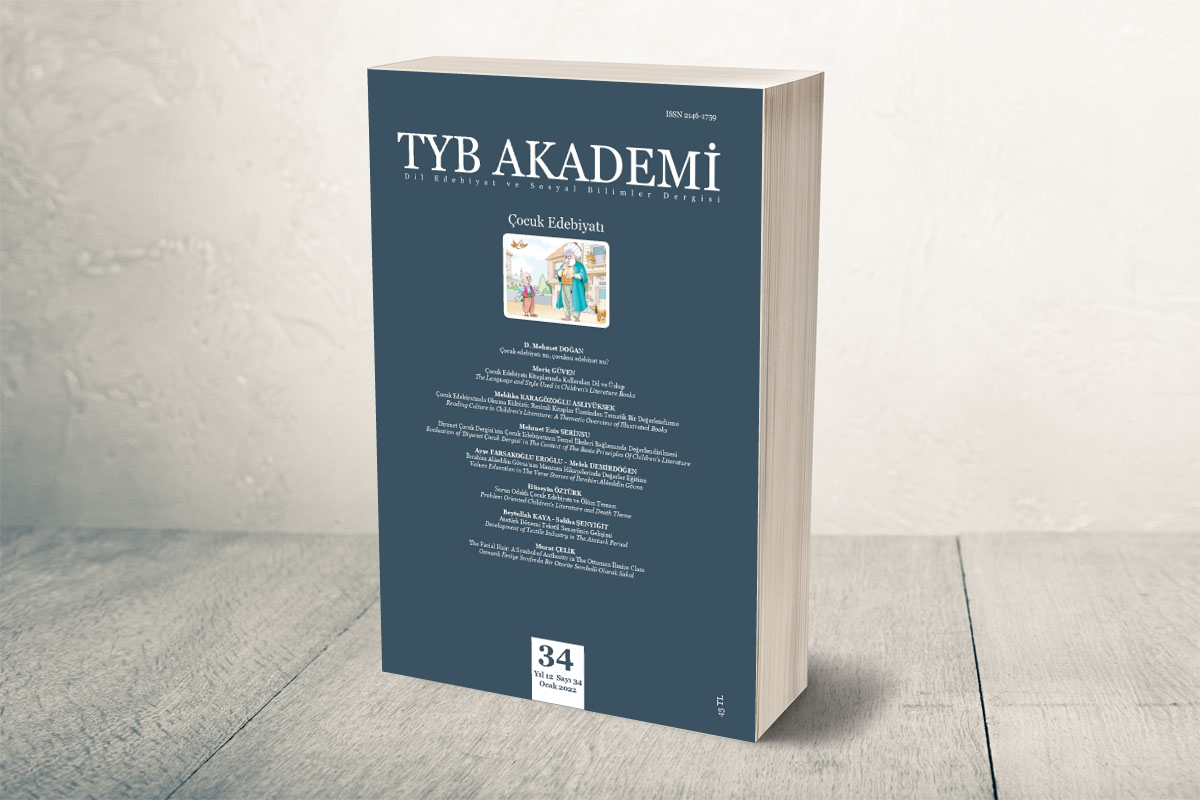
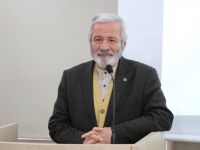
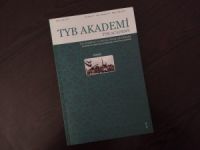
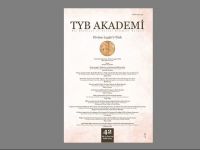
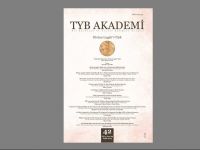





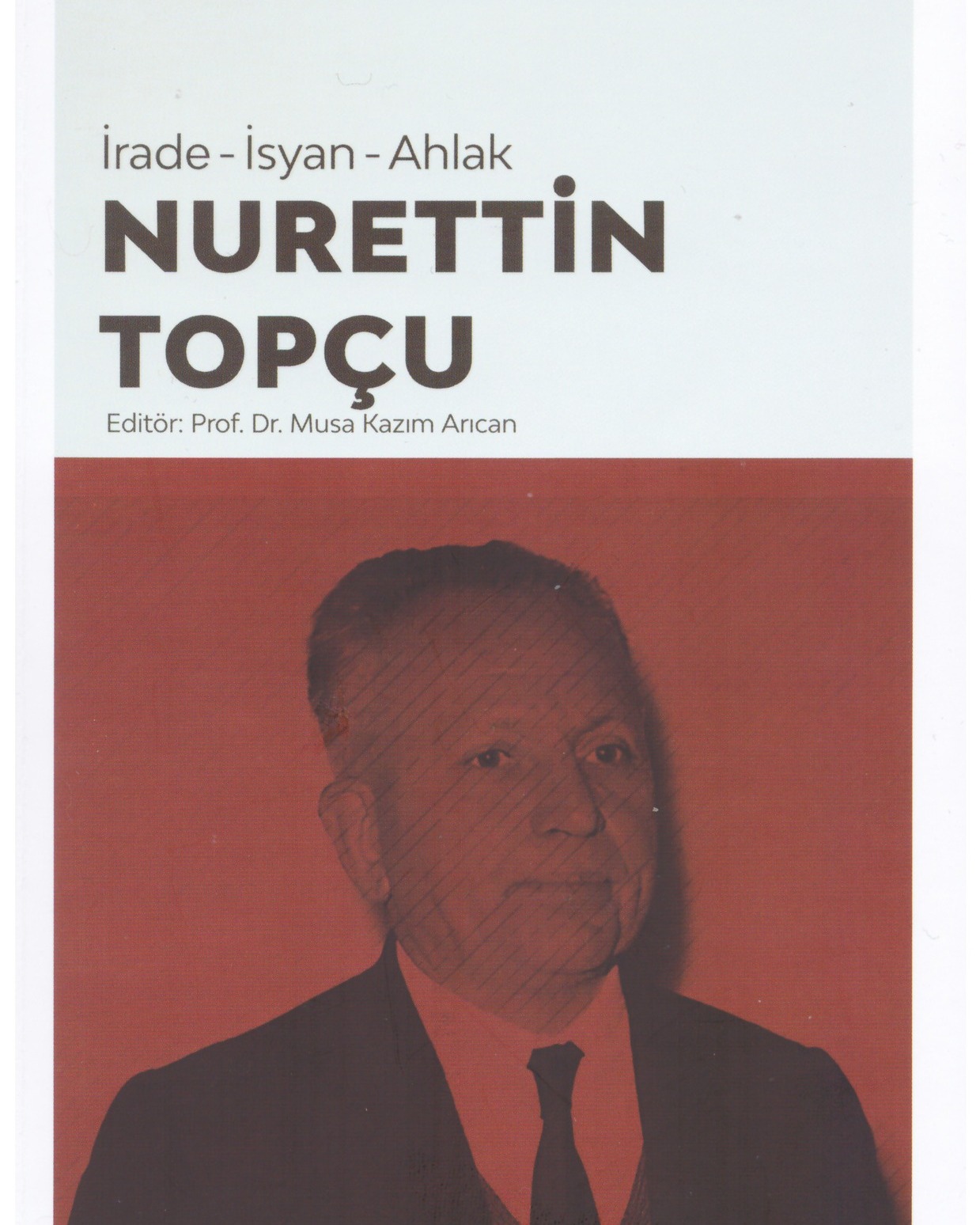
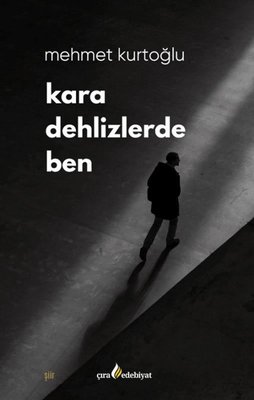
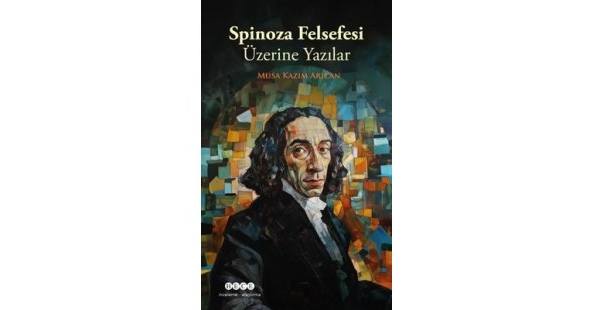
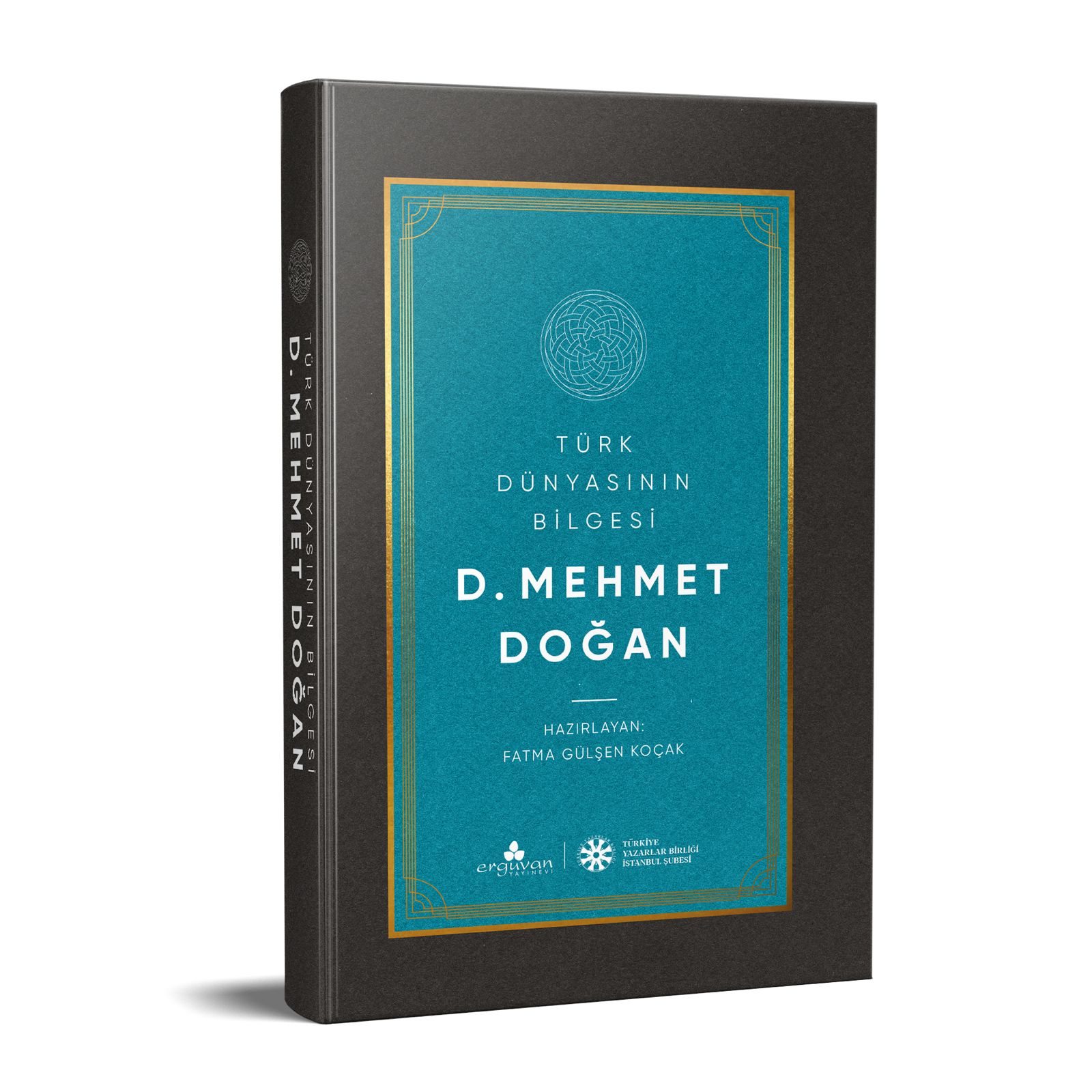
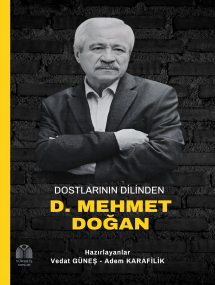
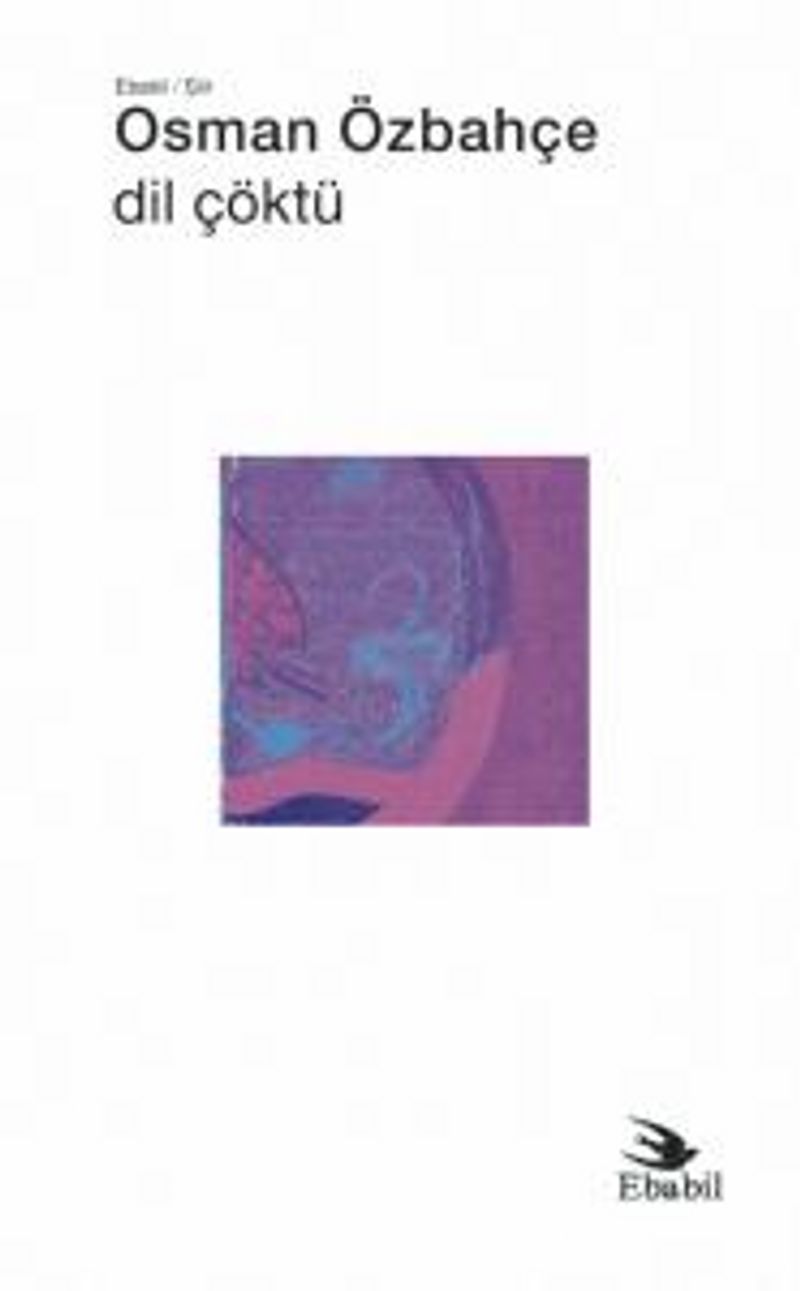
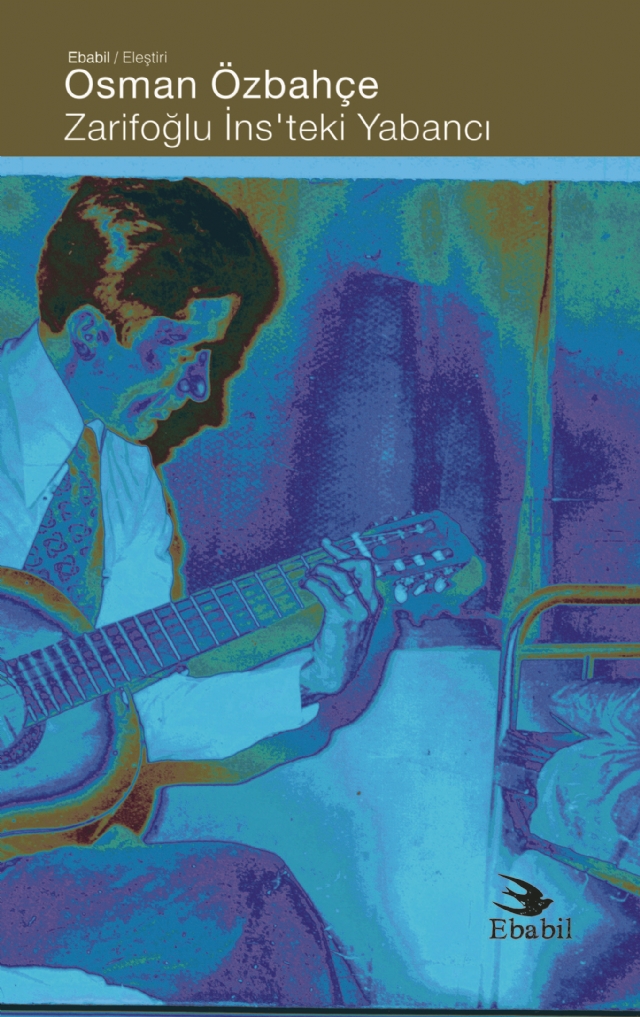
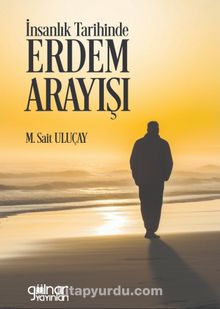
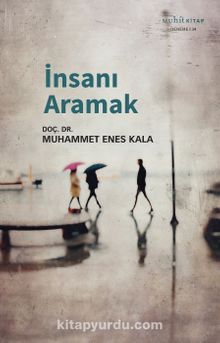
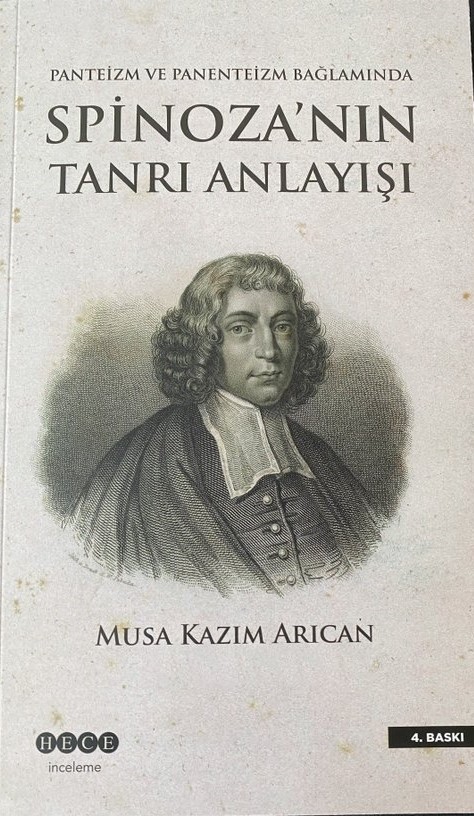

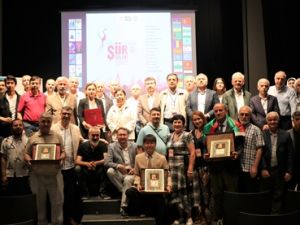
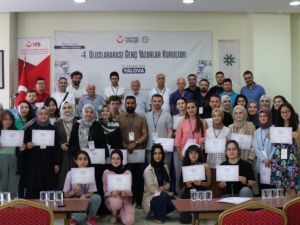



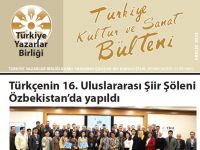
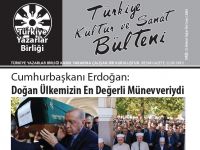
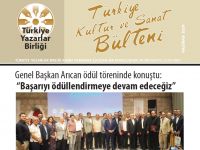
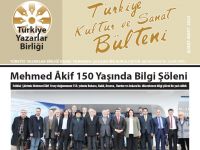
Türkçe karakter kullanılmayan ve büyük harflerle yazılmış yorumlar onaylanmamaktadır.